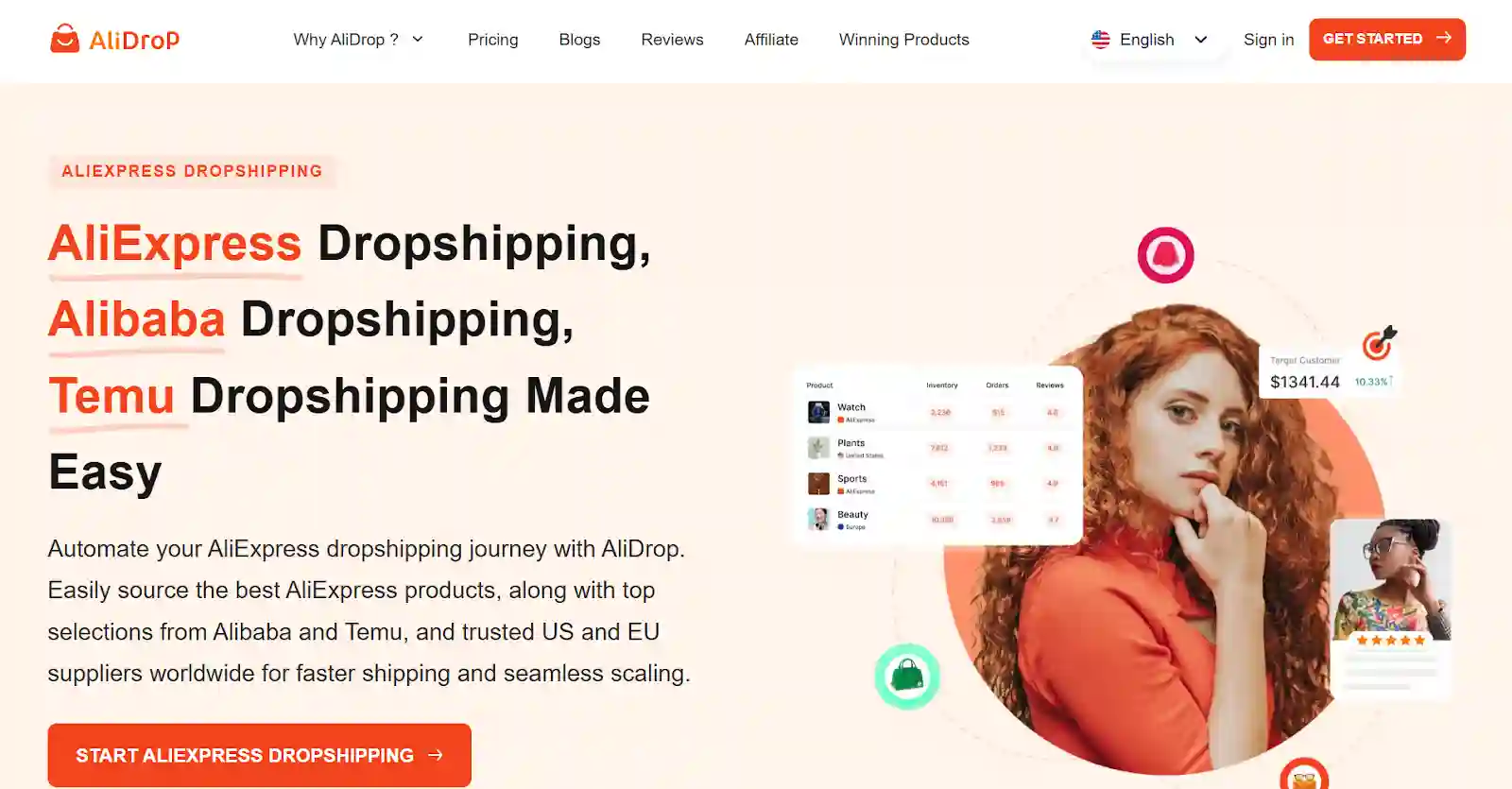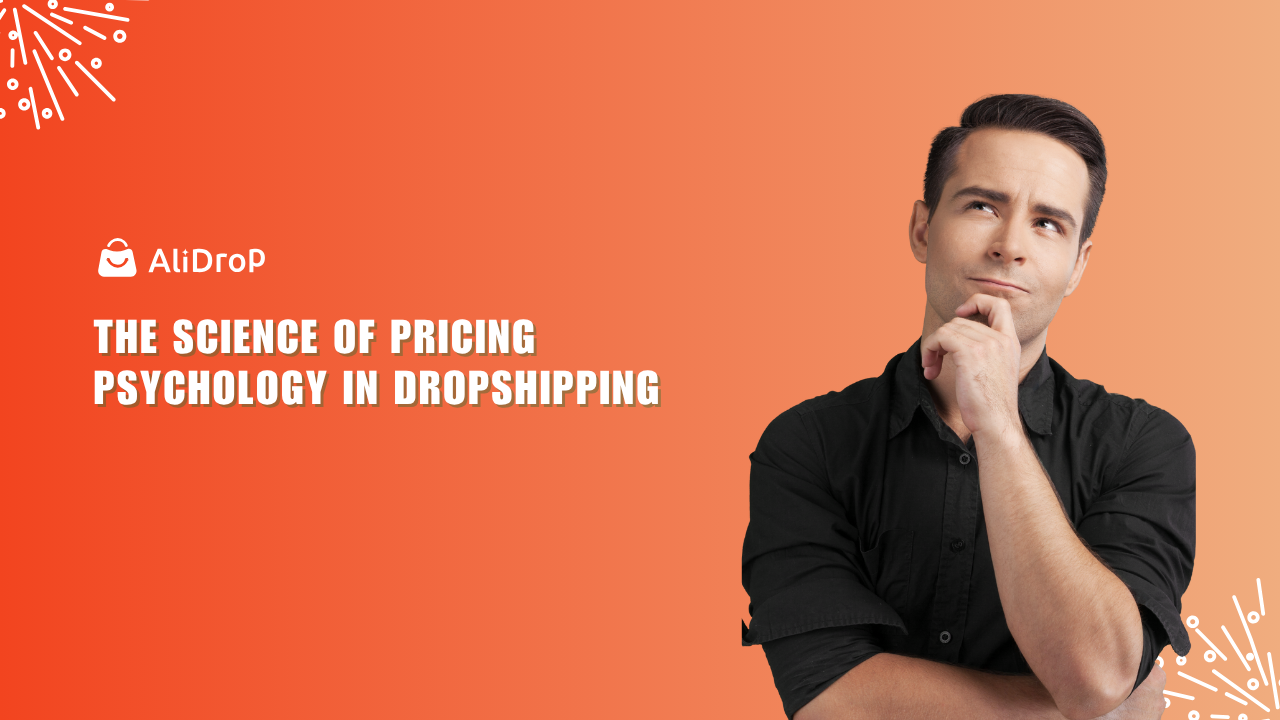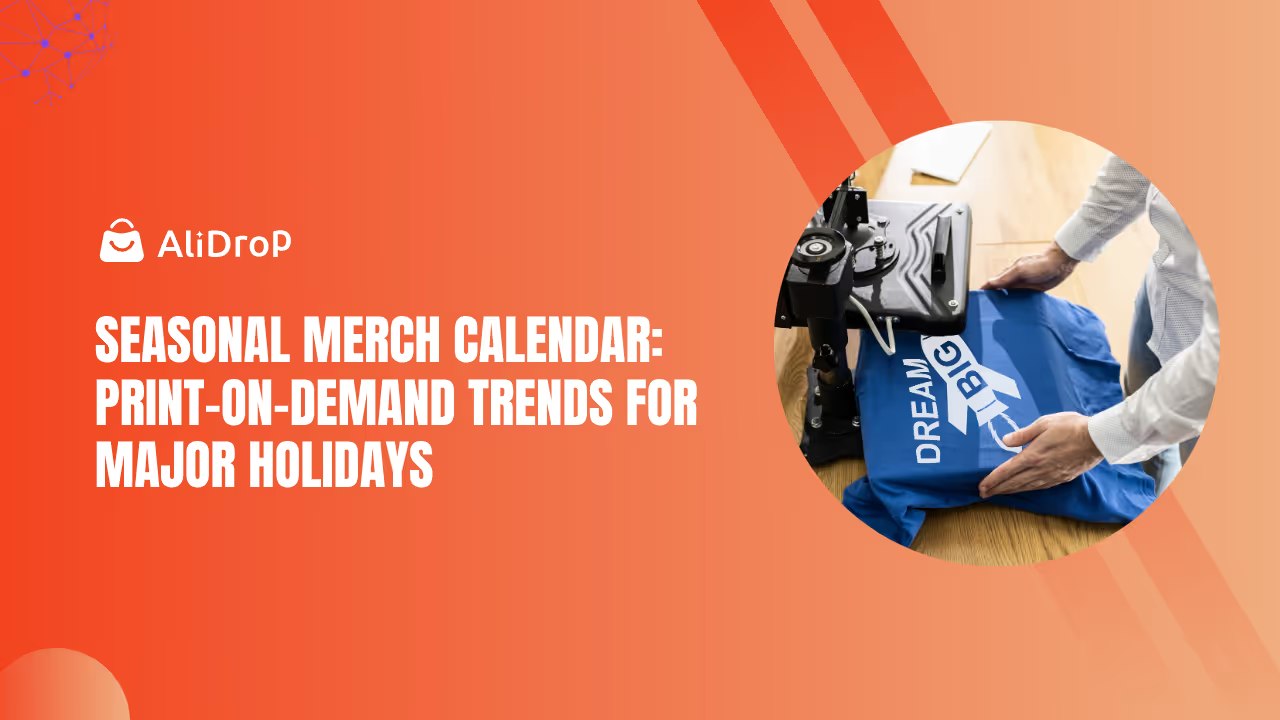Picture running a brand without ever stacking boxes or worrying about leftover stock, yet every order lands perfectly on your customer’s doorstep. That’s the power of zero inventory eCommerce, a model that trades warehouses for imagination.
But here’s where it gets exciting: the strongest brands today don’t pick between dropshipping and print-on-demand. They blend both. This hybrid setup lets you move fast with supplier-ready products while crafting signature pieces that tell your brand’s story. The result? A store that scales like a business but feels like a boutique.
Platforms such as AliDrop make this balance surprisingly simple, syncing reliable suppliers with on-demand printing so you can focus on creativity and marketing instead of logistics.
Ready to see how this print on demand dropshipping hybrid actually works—and why it’s the smartest way to build a flexible, future-proof brand? Let’s break it down.
Hybrid 101 — POD + Dropship, But Engineered For One Brand
You’ve heard of dropshipping. You’ve probably seen print-on-demand stores too. But what happens when a brand smartly blends both? That’s where the hybrid model comes in — a setup that gives you creative freedom, operational flexibility, and a catalog that always stays fresh. Let’s unpack how this works in the real world.
Why Hybrid Now
The online retail landscape is changing fast. Shoppers expect unique, high-quality products, but they also want quick delivery and consistent experiences. Relying on just one fulfillment model limits your options. Print-on-demand offers creativity but slower fulfillment, while dropshipping gives speed but less personalization. The hybrid model bridges this gap perfectly.
By combining both systems, you can offer personalized hero products through POD while expanding your catalog with trending dropship items. It’s the same strategy used by emerging digital-first brands that prioritize agility over heavy infrastructure.
Where Alidrop Fits Naturally
Building a hybrid brand used to mean juggling multiple platforms and endless supplier management. AliDrop simplifies that process. You can source fast-selling products directly from AliExpress while syncing them with your print-on-demand designs.
This means you can test ideas quickly, identify what sells, and pair custom-made items with ready-to-ship ones — all in a single store. It’s not just convenient; it’s a smart way to diversify your revenue while maintaining a cohesive brand identity.
What The Hybrid Model Solves
For creators and entrepreneurs, the hybrid approach removes the usual barriers that hold brands back. It eliminates the need for upfront inventory, minimizes storage costs, and reduces product risk. At the same time, it allows for higher brand loyalty through custom designs and limited editions.
Instead of choosing between speed and uniqueness, you get both. You can scale like a traditional dropshipping business while keeping the emotional connection that comes with personalized products. It’s the most balanced path for modern entrepreneurs who want flexibility without compromising quality or brand value.
Design Your Catalog: A Practical Assortment Matrix
Once you understand how the hybrid model works, the next step is designing a catalog that balances creativity and conversion. Your assortment isn’t just about what you sell — it’s about how those products work together to shape your brand identity and customer experience. Let’s map it out clearly.
The Three-Tier Product Structure
Every strong hybrid brand organizes its catalog into three layers. Think of them as building blocks that keep your store both exciting and profitable.
Tier A — Brand Heroes (POD): These are your signature products — custom-designed items like apparel, mugs, or tote bags that represent your brand’s voice. They’re made on demand, giving you creative control and exclusivity.
Tier B — Basket Builders (Dropship): These are everyday essentials or accessories that pair perfectly with your hero products. They’re quick to ship, affordable, and raise your average order value.
Tier C — Testbed Items (Either): This is your experimental zone. You can test new designs or trending products using either print-on-demand or dropshipping to see what resonates before scaling.
This three-tier structure keeps your catalog diverse but intentional, helping you serve both loyal fans and new shoppers without overwhelming your operations.
How To Decide What Goes POD vs Dropship
Choosing the right rail for each product doesn’t have to be guesswork. Use a simple decision matrix that weighs three key factors:
Brand Differentiation: If the product tells your brand’s story or reflects your unique style, it’s a strong candidate for print-on-demand.
Demand Predictability: If the item is trend-driven or frequently reordered, dropshipping might be more efficient.
Margin And Delivery Expectations: POD works best for higher-margin, design-focused products, while dropshipping suits lower-cost, fast-moving items that people want quickly.
This balance ensures your brand feels curated while your operations remain efficient. You’re not choosing one over the other — you’re blending them strategically to protect your profit margins and your brand image.
Pricing Guardrails And Bundles
Pricing can make or break your hybrid model. Start by setting a minimum contribution margin for each rail — what you earn after covering product and shipping costs. Then build bundles that mix POD and dropship items to increase order value.
For example, if you’re selling a custom-printed hoodie, offer a matching dropship beanie or water bottle as an add-on. This not only boosts your revenue but also delivers a complete brand experience. The customer sees value, you earn more per order, and both fulfillment models work together in harmony.
Ops Blueprint: Routing Rules, Mixed Carts & ETA Parity
Now that your catalog is structured, it’s time to focus on the backbone of your hybrid brand — operations. This is where the magic happens behind the scenes. A solid operations blueprint keeps your print-on-demand and dropshipping workflows running smoothly, ensuring orders get fulfilled quickly and customers stay happy.
How The Hybrid Workflow Runs
In a hybrid setup, every order follows one of two paths. Print-on-demand items go to your printing partner, while dropship items are routed to the supplier for quick dispatch. Both can happen automatically with the right integrations, saving you hours of manual coordination.
For instance, a customer might order a custom t-shirt and a fitness water bottle in one cart. The t-shirt is printed on demand, and the bottle ships from a supplier — both handled simultaneously through automation. The customer gets one seamless experience without realizing it came from two different sources.
Smart Order-Routing Rules
Order routing is what keeps hybrid operations efficient. Create a set of rules that determine where each product goes based on inventory status, location, and delivery time.
- If the SKU is print-on-demand, send it to the nearest print partner that can meet the delivery window.
- If it’s a dropship item, choose the supplier with the best price-to-shipping ratio.
- If the cart has both types, split the shipment but notify the customer in advance with transparent tracking.
These simple rules prevent confusion, reduce delays, and keep communication clear — a huge advantage when running multi-source fulfillment.
Using Alidrop To Simplify Multi-Supplier Management

Managing multiple suppliers manually can be overwhelming. That’s where AliDrop comes in handy. It connects your store directly to trusted AliExpress suppliers, automating product imports, order routing, and tracking updates.
Instead of jumping between tabs or manually updating inventory, AliDrop does the heavy lifting. You can focus on optimizing your listings, improving your marketing, and scaling your business while the backend runs itself.
Shipping Promises And ETA Consistency
One of the biggest challenges of the hybrid model is keeping delivery times consistent. Customers don’t care how you fulfill their order — they just want reliability.
Set realistic delivery ranges for both fulfillment types. Communicate clearly on product pages, and use tracking tools that unify updates across suppliers and print partners. When possible, choose local or regional partners to reduce delays.
The goal is simple: even if items ship separately, they should arrive within a similar timeframe, preserving trust and ensuring a consistent brand experience.
The Numbers: Unit Economics & Breakeven ROAS
Once your operations are set, it’s time to understand the math that powers your business. Numbers may not be as exciting as design or marketing, but they reveal whether your hybrid setup is sustainable or just running on hope. Knowing your costs and margins will help you scale confidently without guesswork.
Why The Math Matters
Hybrid models give you flexibility, but they also create different cost structures for each fulfillment method. Print-on-demand products usually have higher base costs but also allow for premium pricing. Dropship items tend to offer lower margins but sell faster.
When you understand how these numbers interact, you can make smarter decisions — from pricing to ad spend. It’s what separates casual sellers from real brand builders.
Example: A Print-On-Demand Product
Let’s say you sell a custom-printed hoodie for $60. The printing and base cost is $30, packaging and shipping total $8, and platform fees are $5. That leaves you with $17 in contribution margin — before ad spend.
If you’re spending $12 to acquire a customer, your profit per hoodie is $5. That might sound small, but print-on-demand’s value comes from brand equity and repeat customers who buy again without you paying for another ad click.
Example: A Dropship Product
Now consider a dropship product — a matching beanie sourced through AliDrop for $10 and sold for $30. Shipping and platform costs add up to $8, leaving $12 in margin.
Here, the lower cost and faster shipping make it easier to attract first-time buyers. While the margin might not scale as high as your POD products, dropship items often drive volume and keep your catalog dynamic.
Finding Your Breakeven ROAS
Return on Ad Spend (ROAS) is how you measure if your marketing is actually profitable. To calculate your breakeven ROAS, divide your revenue per order by your profit per order.
For example, if your average order value is $70 and your profit per order is $20, your breakeven ROAS is 3.5. That means for every $1 you spend on ads, you need at least $3.50 in revenue to break even. Anything higher is pure profit.
Managing Cash Flow And Ad Budgets
Print-on-demand platforms usually charge after an order is placed, keeping your cash flow light. Dropshipping, on the other hand, may involve pre-paying suppliers or using automatic payments. Tracking this cash cycle helps you avoid overcommitting during growth phases.
Set a fixed ad budget tied to weekly profit, not total sales. This ensures your growth doesn’t outpace your ability to reinvest sustainably. A data-driven approach to both fulfillment models keeps your hybrid brand profitable long-term.
Customer Experience: Policies That Reconcile POD & Dropship
You can have the best products and perfect operations, but if your customers feel confused or frustrated, the brand won’t grow. A strong customer experience bridges the technical gap between print-on-demand and dropshipping, creating a unified experience that builds trust and loyalty.
Why CX Is The Backbone Of Hybrid Brands
Customers don’t care which fulfillment method you use — they only care about reliability, clarity, and service. The beauty of the hybrid model is that it allows flexibility behind the scenes while maintaining consistency upfront.
Your mission is to make the process invisible to them. That means clear communication, predictable delivery, and simple policies that apply to both fulfillment methods without confusion.
Pre-Purchase Clarity Builds Confidence
Transparency starts before the sale. Be upfront about delivery times, especially when orders may arrive separately. Instead of hiding split shipments, frame them as a convenience — faster delivery of available items first.
Add small details like “Made on demand just for you” or “Ships directly from our studio” on product pages to set expectations. These small touches create authenticity and reduce support tickets later.
Returns And Exchanges Made Simple
This is where many hybrid stores stumble. Print-on-demand products are custom-made, which means they often can’t be restocked. For those, offer reprints or partial refunds for defects instead of returns.
Dropship items, however, can usually be returned within a window — especially when managed through AliDrop’s trusted suppliers. Create one clear return policy that covers both situations. For example:
- POD: Free reprint or credit for misprints or damages
- Dropship: Returns accepted within 15–30 days of delivery
Keeping your language clear and fair makes customers feel supported, even when policies differ behind the scenes.
Consistent Branding Across Every Package
Hybrid brands often have multiple fulfillment sources, but the customer should still feel like everything came from one cohesive brand.
Add small branded inserts, thank-you cards, or QR codes that link to your website or care instructions. Many print-on-demand partners and dropship suppliers allow custom packaging options — use them when possible. Even a consistent color scheme or tone in packaging can make a big difference.
Turning Issues Into Retention Opportunities
Mistakes happen — a delayed order or misprint can easily turn into a bad review if not handled well. Instead, use issues as moments to reinforce your brand’s reliability.
Respond quickly, acknowledge the inconvenience, and overdeliver on the solution. Offer discounts or small add-ons for their next order. When customers see how professionally you handle problems, they’re more likely to become repeat buyers.
A polished customer experience doesn’t just reduce complaints — it transforms one-time shoppers into brand advocates who trust your process, no matter how complex it is behind the scenes.
Conclusion: Hybrid Is The Future Of No-Inventory Brands
The hybrid model isn’t just reshaping eCommerce — it’s redefining how modern entrepreneurs build lean, profitable brands. By combining print-on-demand’s creativity with dropshipping’s scalability, you gain flexibility without sacrificing brand identity. It’s the simplest way to offer variety, test ideas fast, and grow sustainably, all without holding a single piece of inventory.
Platforms like AliDrop make this evolution seamless. They connect you to reliable suppliers, automate fulfillment, and free up time for what actually matters — marketing, storytelling, and customer relationships. In a world that rewards agility, hybrid brands stand out because they stay light, move fast, and keep customers at the center of everything. The future of zero-inventory eCommerce belongs to those who master that balance.
FAQs About Zero-Inventory Brands
What is zero inventory ecommerce?
It’s a strategy where you sell without stocking goods, syncing production or supply directly to customer demand. You keep inventory near zero by using just-in-time fulfillment, digital catalogs, and on-demand or third-party suppliers.
How can I start an online store without holding inventory?
Pick a platform, source products via print-on-demand or supplier networks, and connect apps that automate listings, orders, and tracking. Begin with a small catalog, validate demand, and scale what sells.
Is dropshipping the same as zero inventory?
Dropshipping is one way to achieve a zero-inventory operation, but it isn’t the only way. You can also use print-on-demand or a blended approach, routing some SKUs to suppliers and others to on-demand production.
What’s the difference between print-on-demand and dropshipping?
Print-on-demand makes each unit after purchase, enabling unique, brandable designs with higher base costs and variable lead times. Dropshipping ships pre-made goods from suppliers, offering breadth and speed but less customization. A hybrid model combines both.
What are the pros and cons of going zero inventory?
Pros include lower upfront costs, faster testing, lighter cash cycles, and flexible scaling. Cons include thinner margins on some items, reliance on partner SLAs, and more complex customer experience if orders split-ship.























